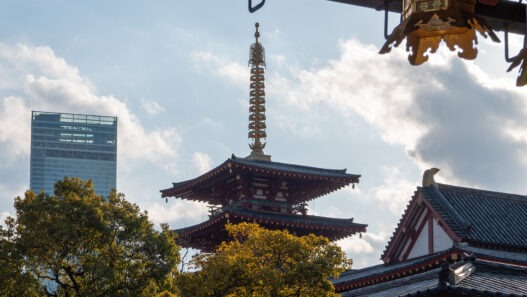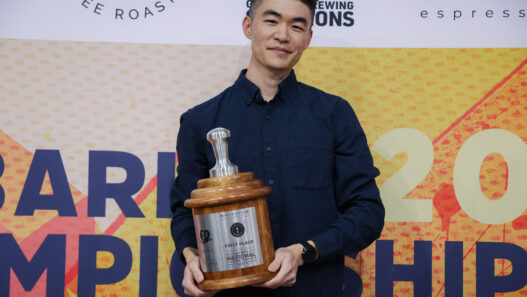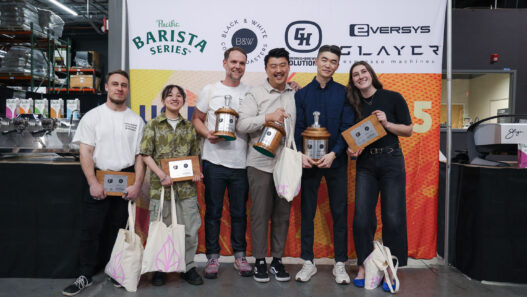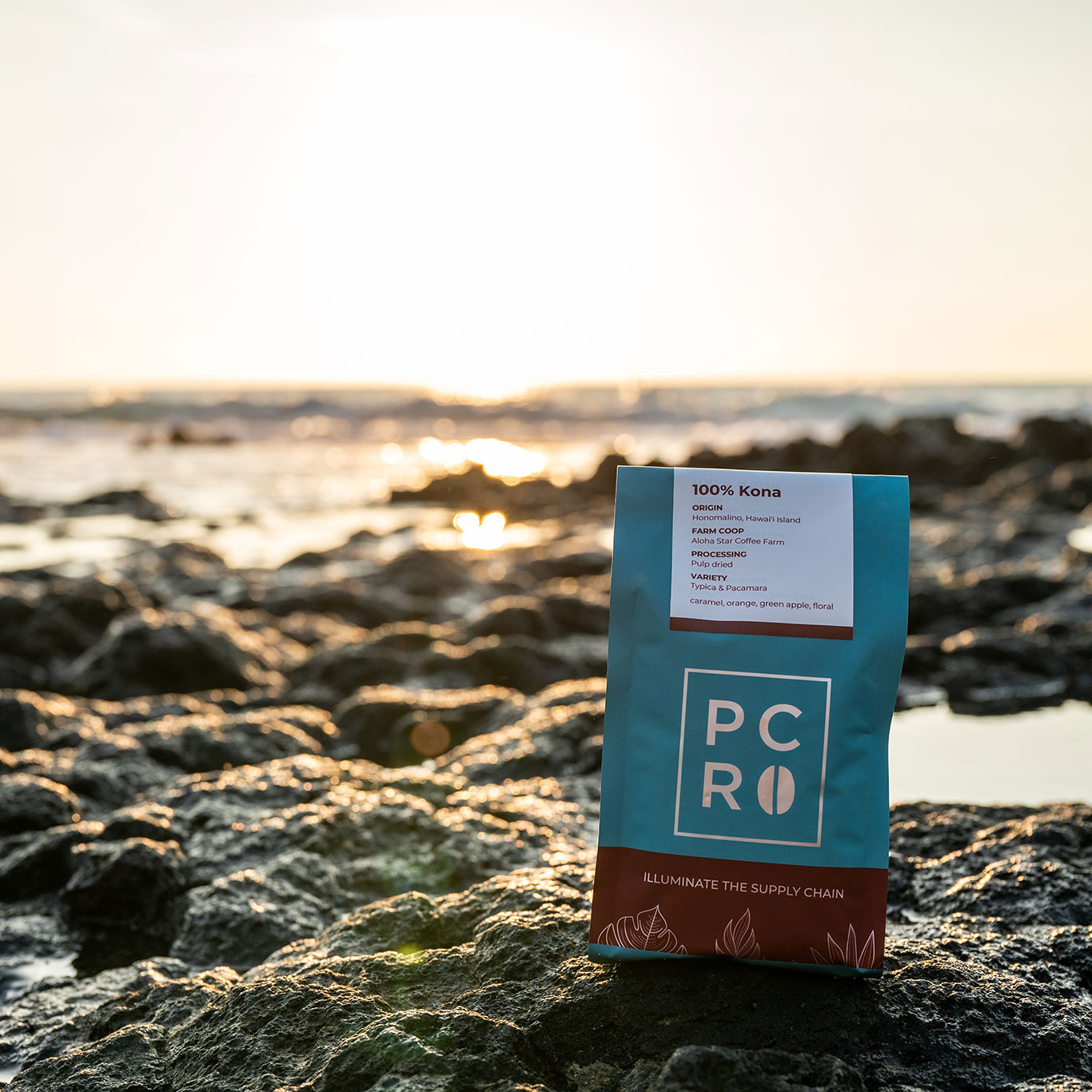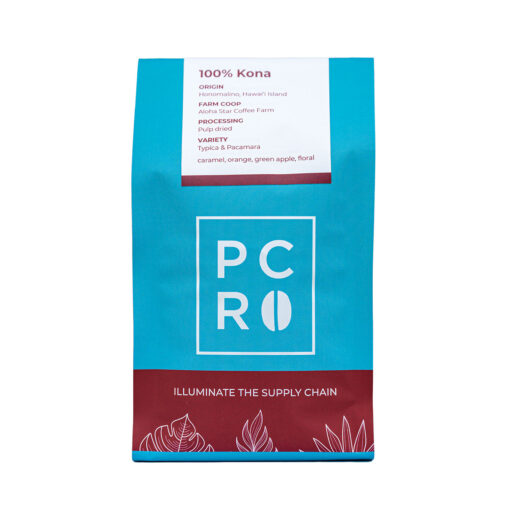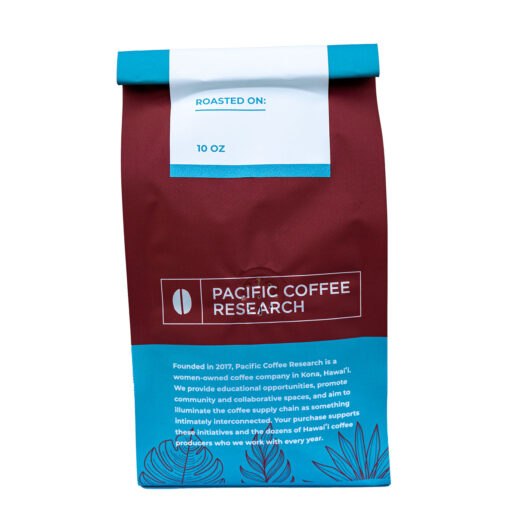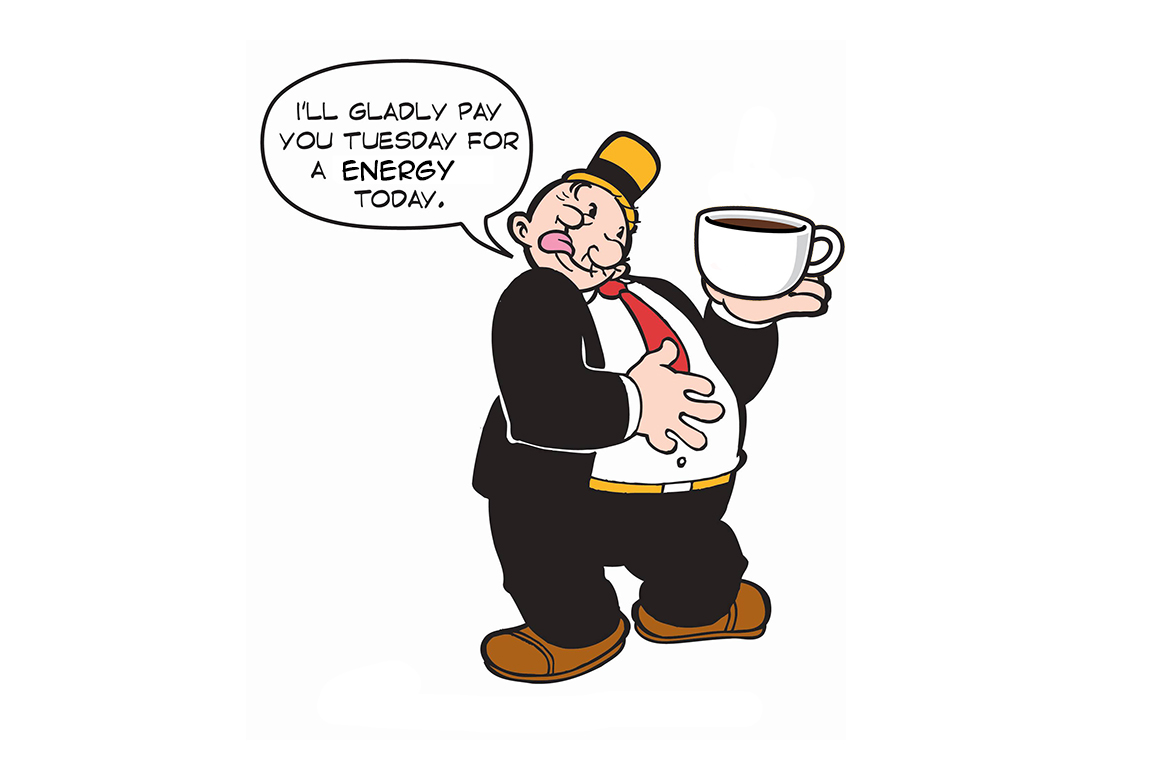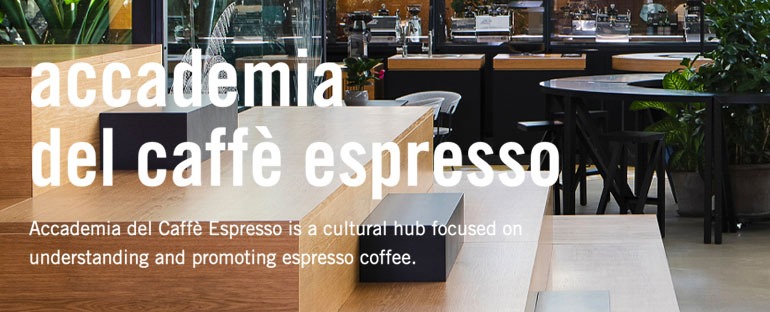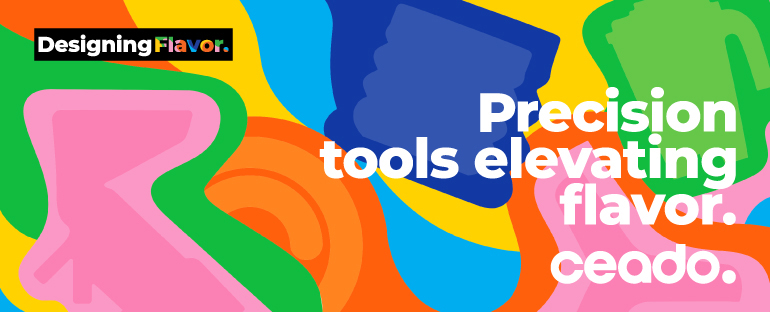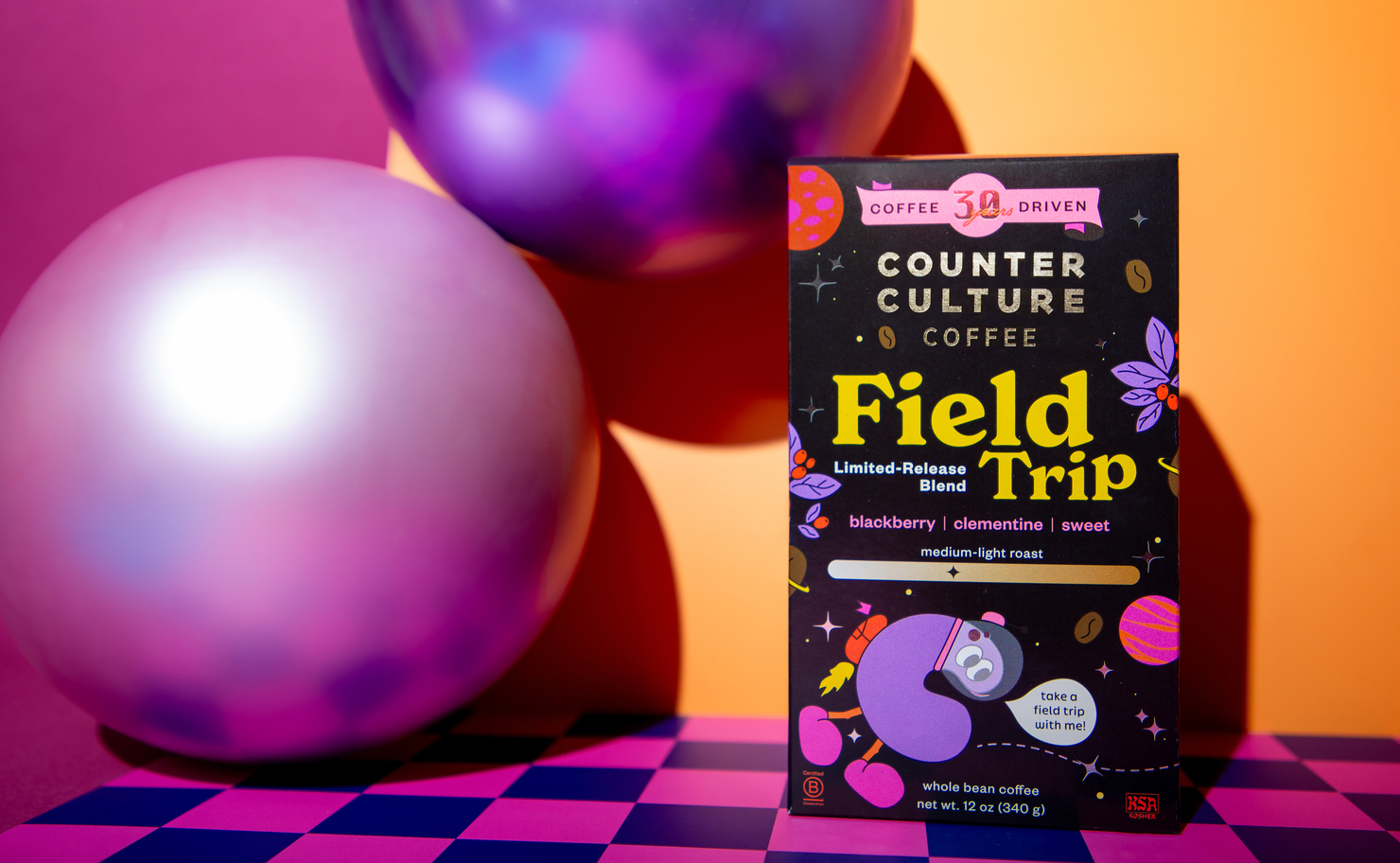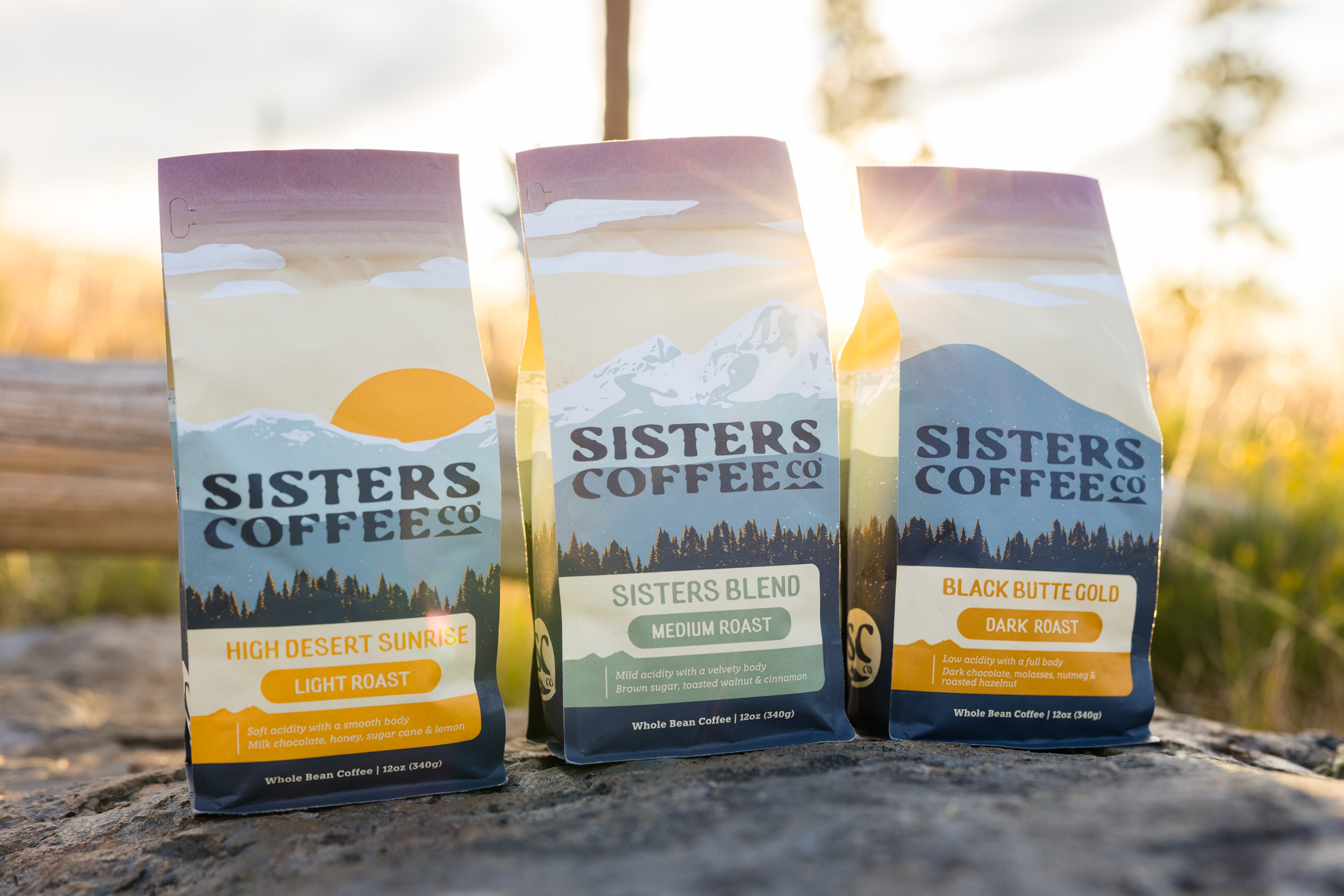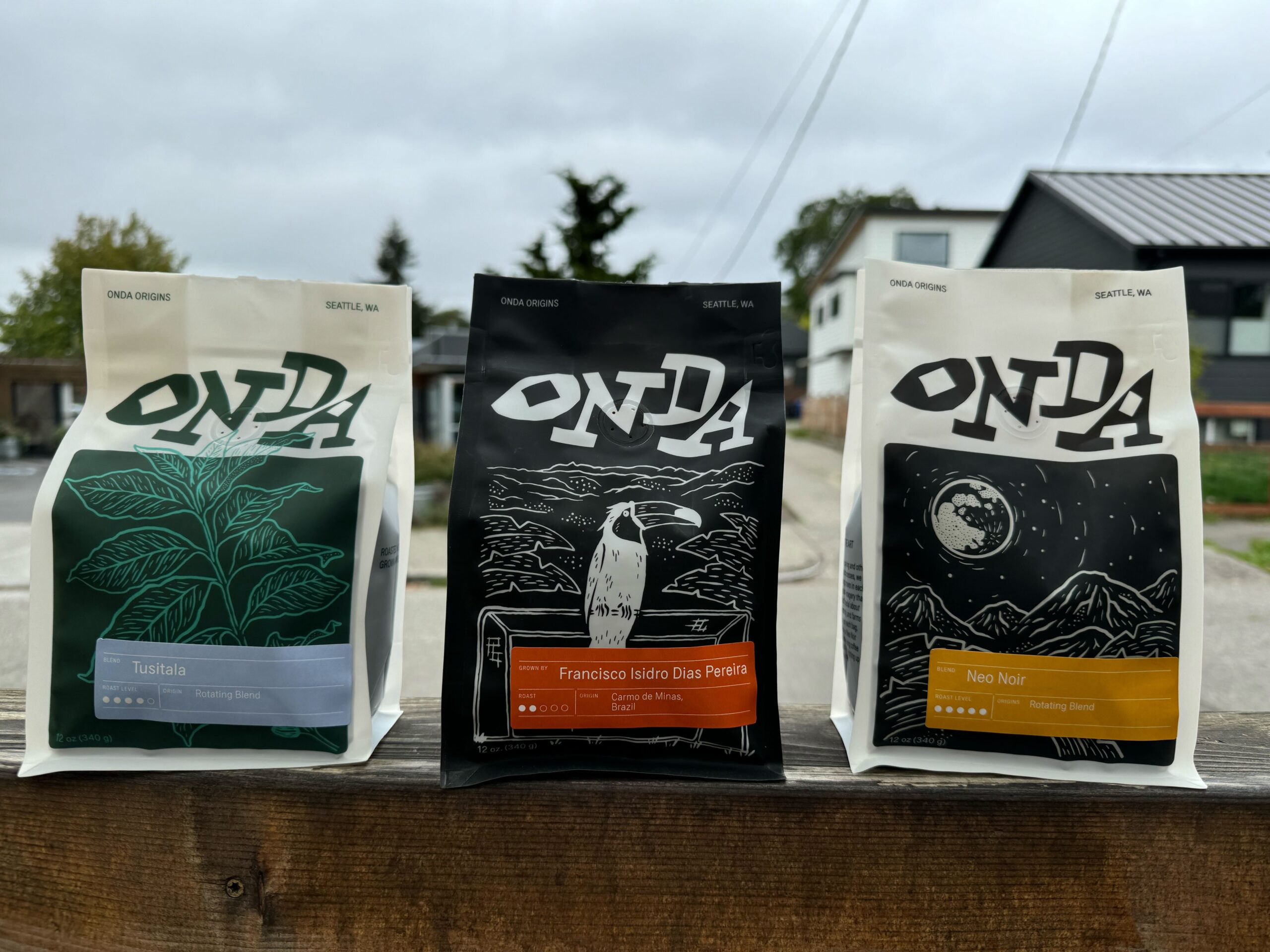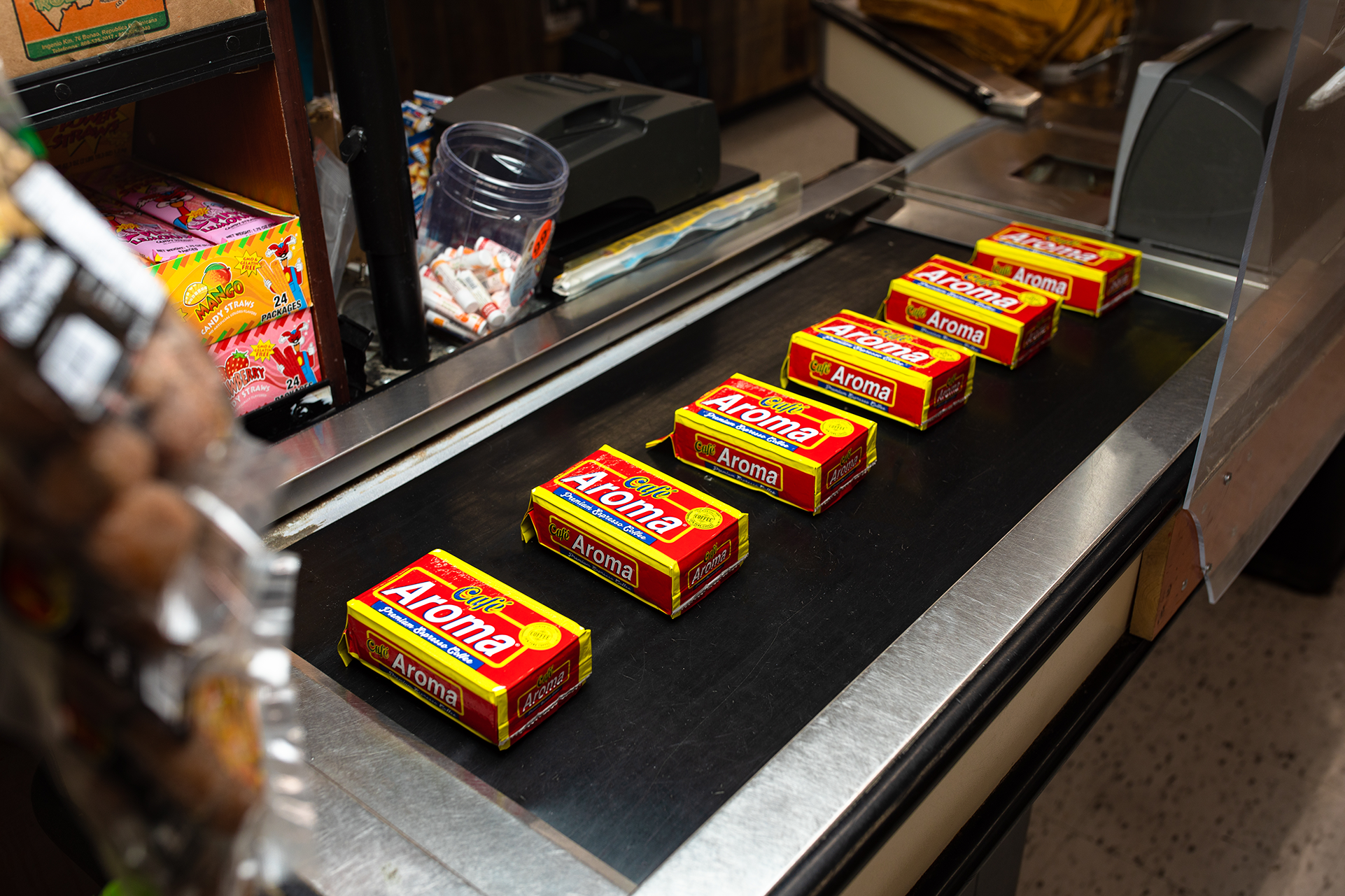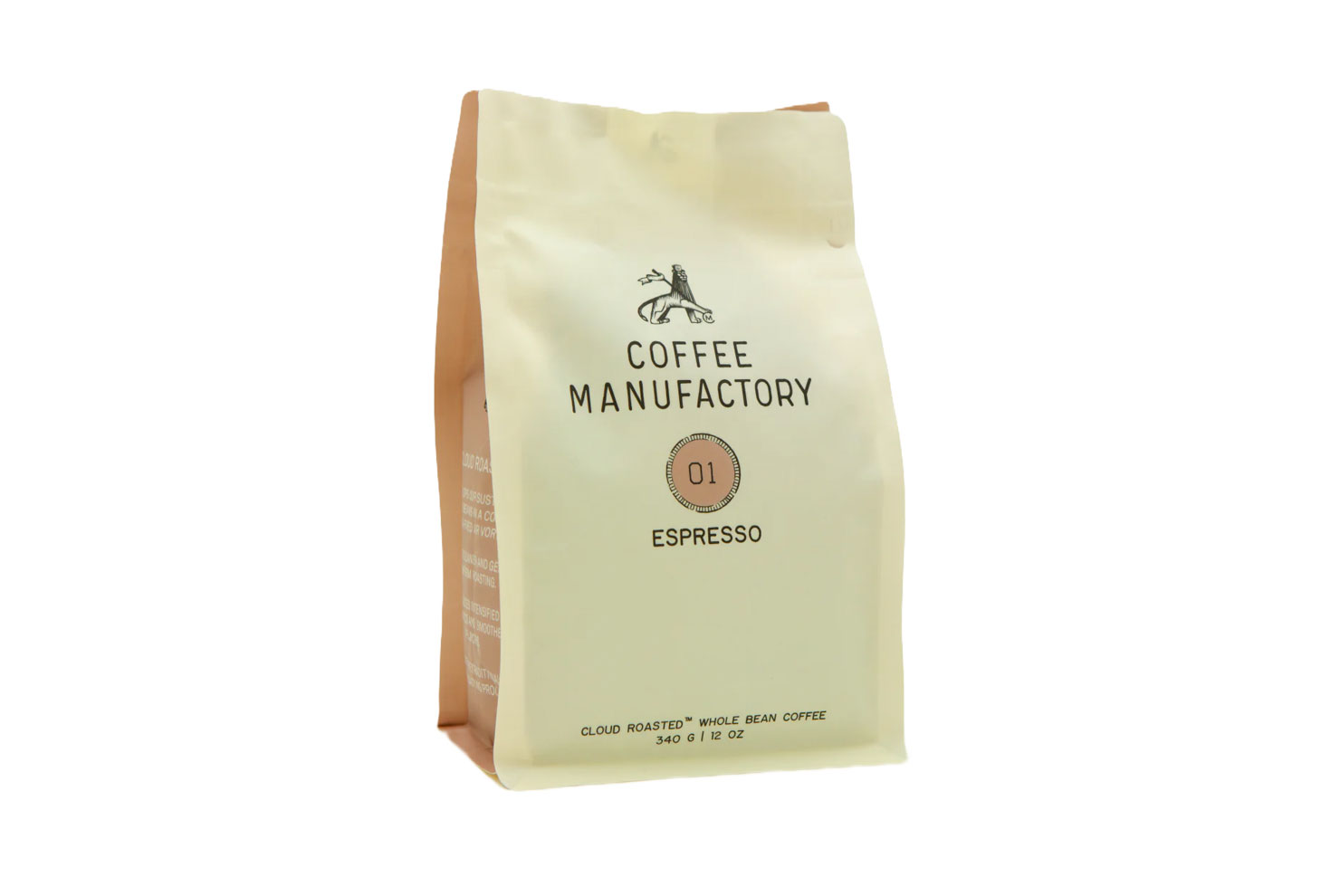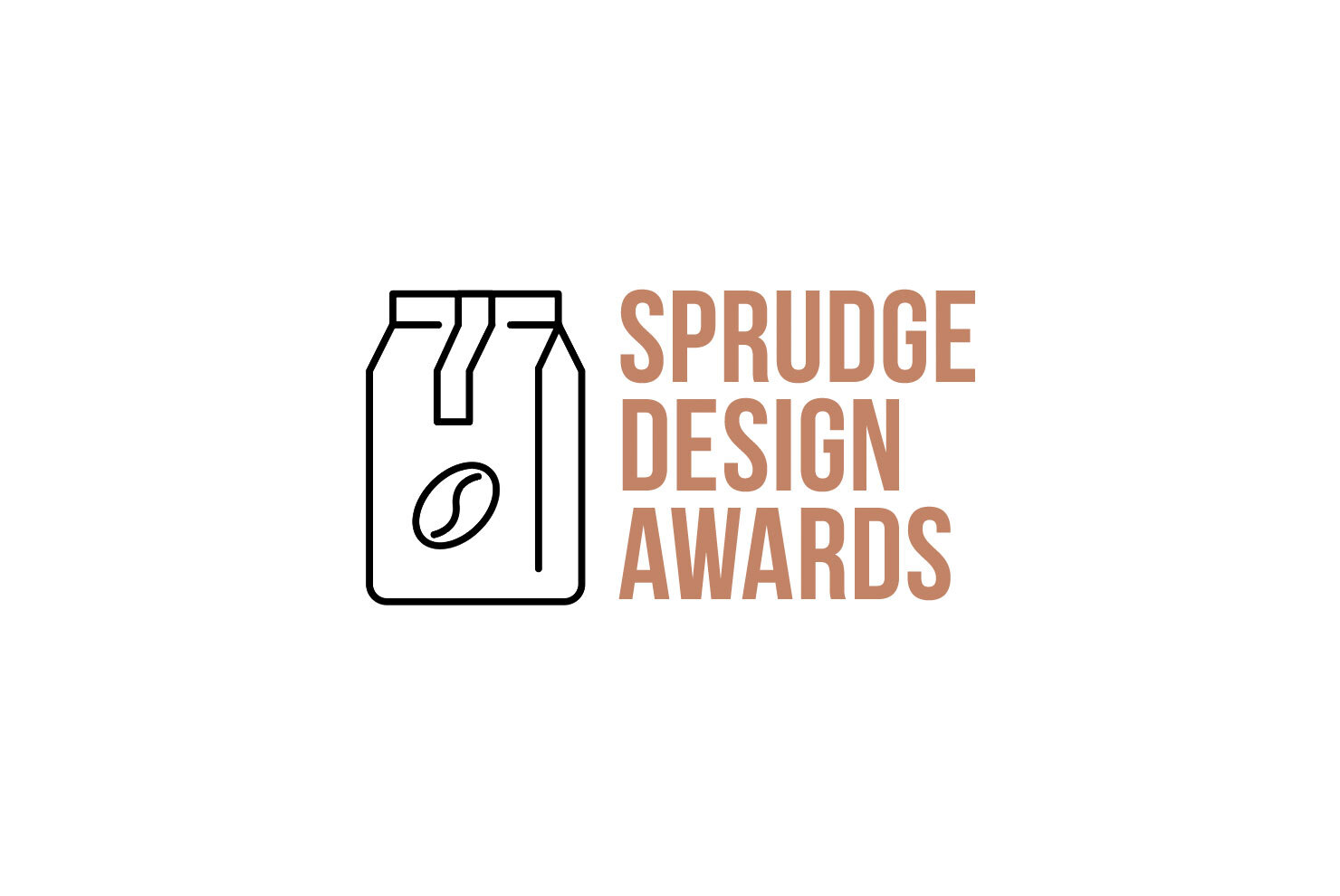In our latest issue of Coffee Design, we’re learning more about Pacific Coffee Research. Pacific Coffee Research (PCR) is a little company out of Hawaii doing big things with coffees grown on the Island of Hawaiʻi (also known as Hawaiʻi Island and The Big Island). Coffees from this part of the world are every bit as gorgeous and beautiful as you’ve heard, and we love the ongoing specialty coffee embrace of this historic origin.
In fact, the coffees here are so delicious, they’ve been nominated as finalists for the 2023 Good Food Awards! It helps that the design work around these coffees is so thoughtful and producer—focused. We just had to learn more: this is Pacific Coffee Research of Hawaiʻi on Coffee Design.
We spoke with co-owners Brit Horn & Madeleine Longoria-Garcia to learn more.
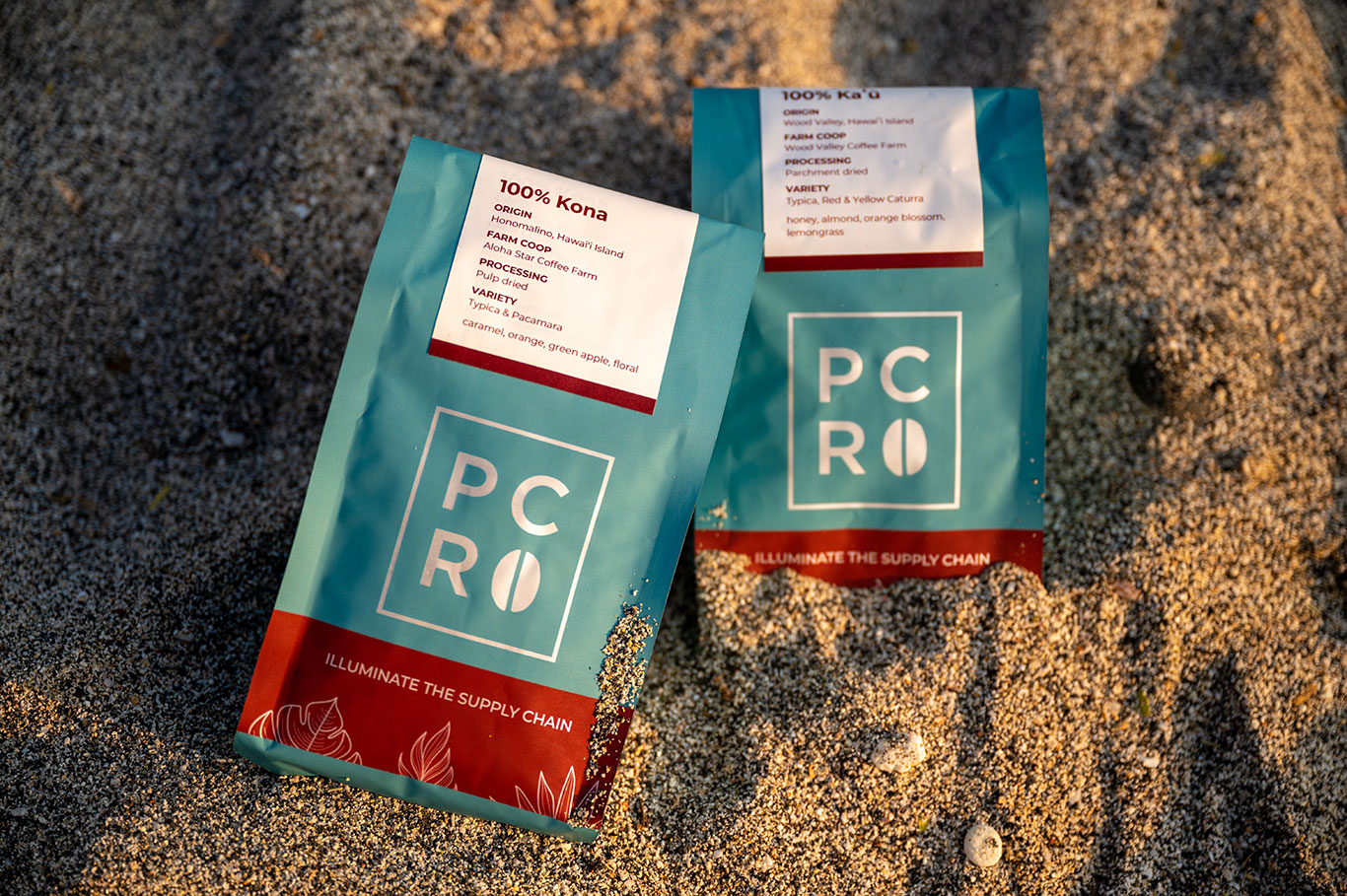
Congratulations on becoming finalists for the 2023 Good Food Awards! Please tell us more about the two coffees that have been honored!
Thank you so much, we’re excited and so honored to be included on this list of talented roasters across the nation! The two coffees that are recognized as Good Food Awards finalists are grown by Aloha Star Coffee Farms and Wood Valley Coffee.
We met Karina and Armando of Aloha Star Coffee Farms when we hosted the Kona Coffee Cultural Festival’s annual cupping competition in 2018. Their coffee did quite well, placing in the top 10 and they were definitely on our radar! As the pandemic hit in 2020, we began our buying relationship with Aloha Star. They are now our main source for Kona coffee throughout the year. Our relationship with Karina and Armando has developed in so many ways and we now consider each other to be dear friends. Aloha Star Coffee comprises three farms covering about 33 acres of coffee. They primarily produce honey (pulp-dried) and natural (fruit-dried) process coffees to minimize the use of water; this is not standard practice in Kona as most growers produce washed process coffee. Aloha Star does not use any herbicides or pesticides on their farm and composting is standard practice. All farm waste from pruned coffee plants is used for mulching. Aloha Star Coffee is not currently certified organic due to financial constraints, but they plan to pursue certification in the next five years.
We met Alla and Rus of Wood Valley Coffee in 2016 through our previous employers. At the time, Alla was brokering green coffee for another farm in Kaʻū and we were roasting coffee for them. In 2018, Alla and Rus began farming coffee themselves – less than a year after we founded Pacific Coffee Research—and entered their coffee into the Hawaiʻi Coffee Association’s annual cupping competition. Since then, we have cupped their coffees dozens of times through our quality analysis services. Alla and Rus are young and forward thinking. They approach their farming practices in a scientific, innovative, and organized manner. We purchase coffee from them throughout the year and they are our main supplier of Kaʻū coffee. We also consider Alla and Rus dear friends of ours, working on other industry projects throughout the year from local coffee festivals to the Hawaiʻi Coffee Association’s booth presence at SCA Expo. Wood Valley Coffee Farm is 25 acres with 12.5 acres of planted coffee.
Last year, Pacific Coffee Research filmed a virtual coffee farm tour with Wood Valley Coffee!
We love your packaging and branding—is it designed in house or with an outside design team?
Thank you! Our branding was designed by Marisa “Ritzy P” Estrada of Ritzy Periwinkle, a Southern California-based creative and brand strategy agency. Madeleine met Ritzy through an online Latina-focused business coaching program in 2021.
Savor Brands does our printing and they worked with Ritzy to ensure fits, colors, texture, and alignment throughout the entire process.
How long did the design process take?
About four to six months from start to finish. Our initial ideas for redesigned retail packaging turned into a full rebranding project, which included our website and everything else that comes with a company rebrand!
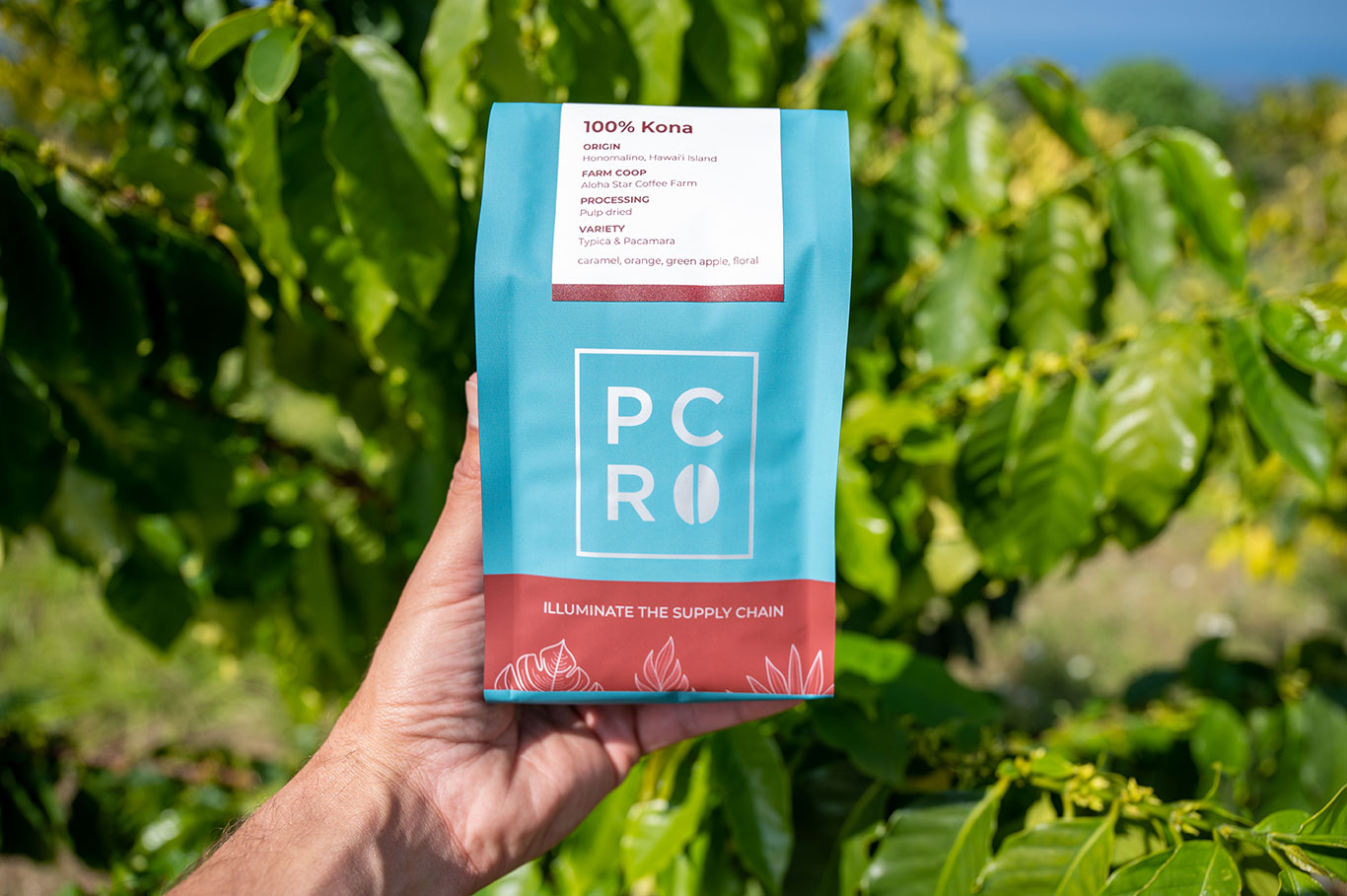
Tell us about the label—we love that origin, farm coop, processing, and variety come first. Was this intentional?
Yes, this was absolutely intentional.
We want to communicate with customers who aren’t able to have a full conversation with us. It’s part of our mission to make consumers aware of what happens before coffee reaches their cups and to also provide growers with a much deeper understanding of what happens with their coffee after it leaves their farm. This creates a deeper understanding of the value of coffee. By highlighting the farm, origin, etc., we hope our packaging at least starts a conversation and makes people curious to know more.
The “Illuminate The Supply Chain” tumbler is beautiful—can you speak more to that motto?
We love those tumblers, too—shout out to Fellow!
The phrase is borrowed from the opening line of PCR’s mission statement:
“It is our goal to illuminate the coffee supply chain as something intimately interconnected…”
This ethos informs how and what we communicate through the various arms of PCR—whether through coffee education, retail packaging, or producer services. We aim to shed light on all areas of the coffee supply chain to provide folks with a more holistic understanding of where their coffee comes from. You’ll find us using this phrase on social media, in our marketing materials, and other communications.
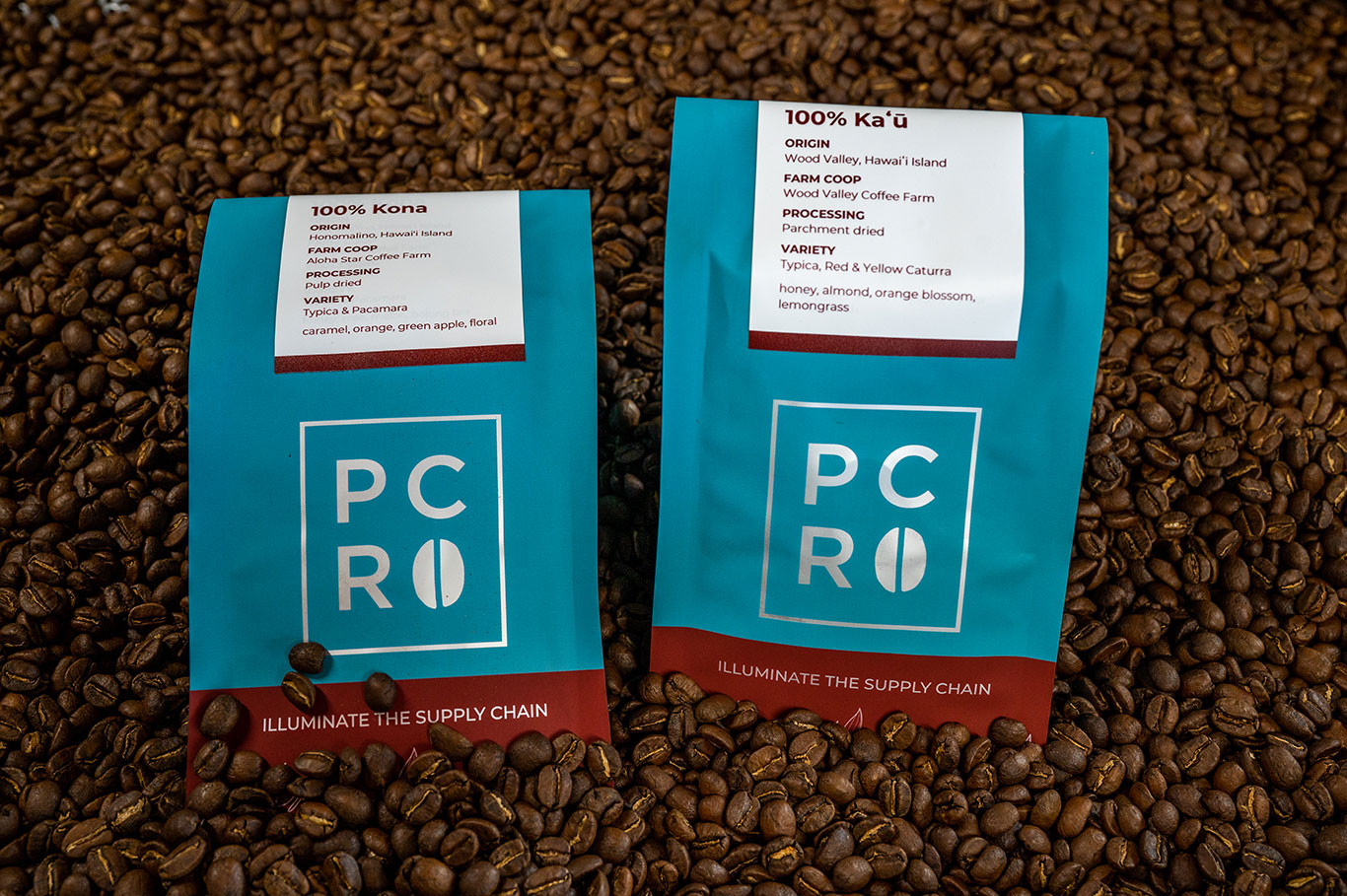
With ongoing climate concerns and its many setbacks in coffee production worldwide, how is coffee cultivation in Hawaiʻi doing here in 2023?
In 2020, coffee leaf rust was finally found in Hawaiʻi and the industry has suffered substantial losses since. Even before this, we observed growing/harvesting seasonal shifts as weather patterns changed over the years. This season, specifically, brought a few challenges. Most growers are practicing heavy pruning to manage rust outbreaks, which is completely reasonable. This does, obviously, lead to lower yields. Additionally, right at the beginning of harvest season, we had a drought and many growers saw cherry never fully develop on their trees, leading to lower yields and quality challenges. Now that flowering season is here, we’ve had producers tell us that they’re not experiencing one or two large blooms, but many small ones. This translates to a longer harvest season with many rounds of picking and a less substantial peak. It will be interesting to see how the following years play out.
How do you explain the high cost of Hawaiʻi coffee to folks who don’t know much about coffee growing in general?
We start with the basics: everyone understands that Hawaiʻi has a high cost of living overall. Then we dig a bit deeper to encourage folks to think about how products and labor are valued around the world.
When we look at Hawaiʻi, we have an established baseline for labor costs, land expenses, and overall living expenses. Labor is an easy one to dissect and compare to other growing regions. A coffee picker in Hawaiʻi may make anywhere from $150-200/day, compared to $5 in Indonesia or $50-80 in Taiwan. The going rate for year-round farm work here is $20/hour or more. Considering just these numbers, it’s evident that the cost of production is much higher in Hawaiʻi than in other coffee growing regions. And we like to use this information to pose the questions: why is labor in Hawaiʻi valued at such a higher rate than in other countries? Why are we okay with paying whatever the “C Market price” is for other coffees when we know this isn’t covering business costs? Hawaiʻi growers don’t operate on the C Market at all, it’s not a sustainable business model.
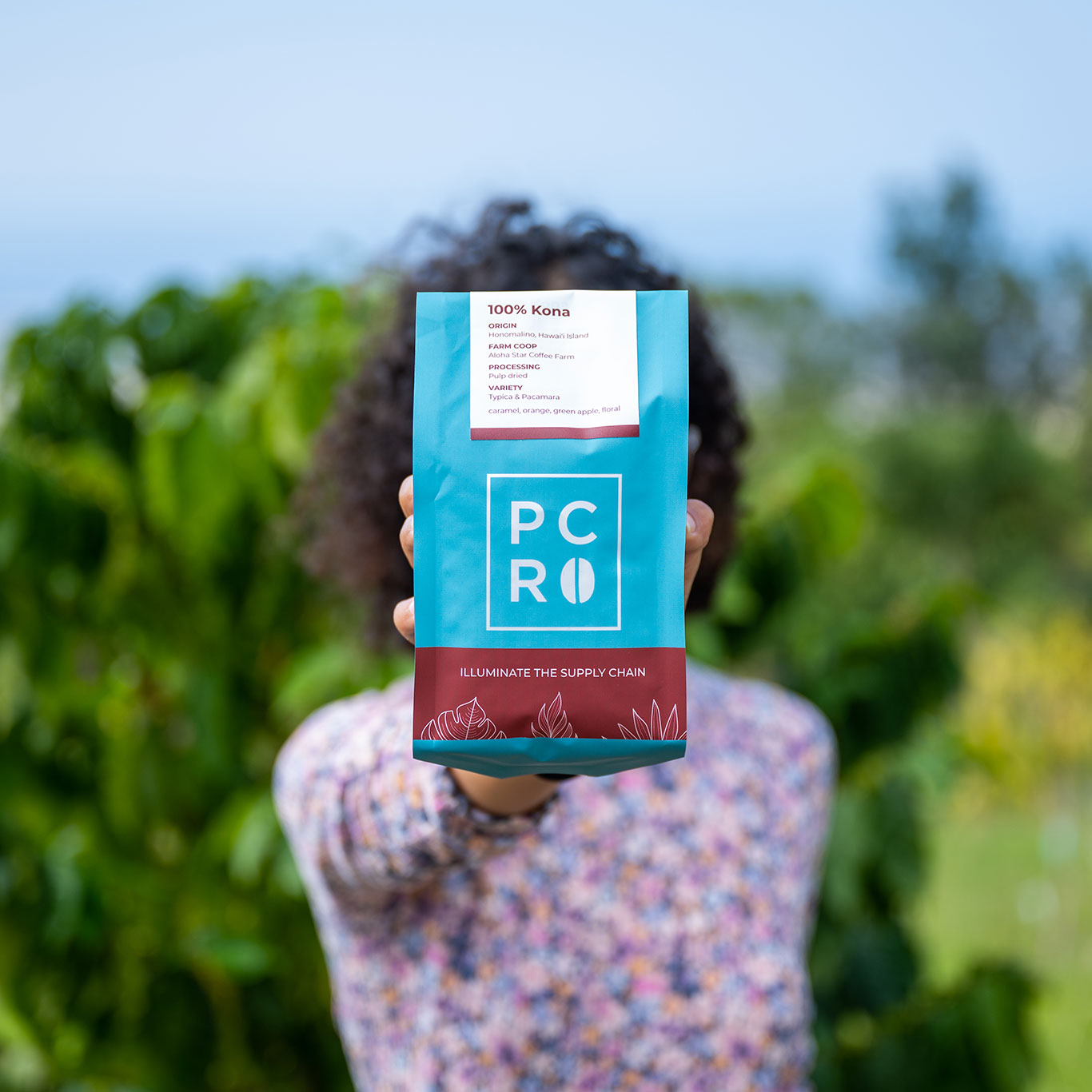
Pacific Coffee Research is a SCA-certified lab facility specializing in coffee consulting, roasting and selling coffees, and thoughtful online educational courses—what does 2023 have in store for PCR?
With a growing team, we hope to grow our wholesale and retail reach beyond the Island of Hawaiʻi. We are fully reintroducing in-person coffee education courses and workshops to coffee professionals and consumers and have new educational offerings lined up!
Thank you!
Mahalo nui for the opportunity to share the brilliance of Hawaiʻi coffee with the world.
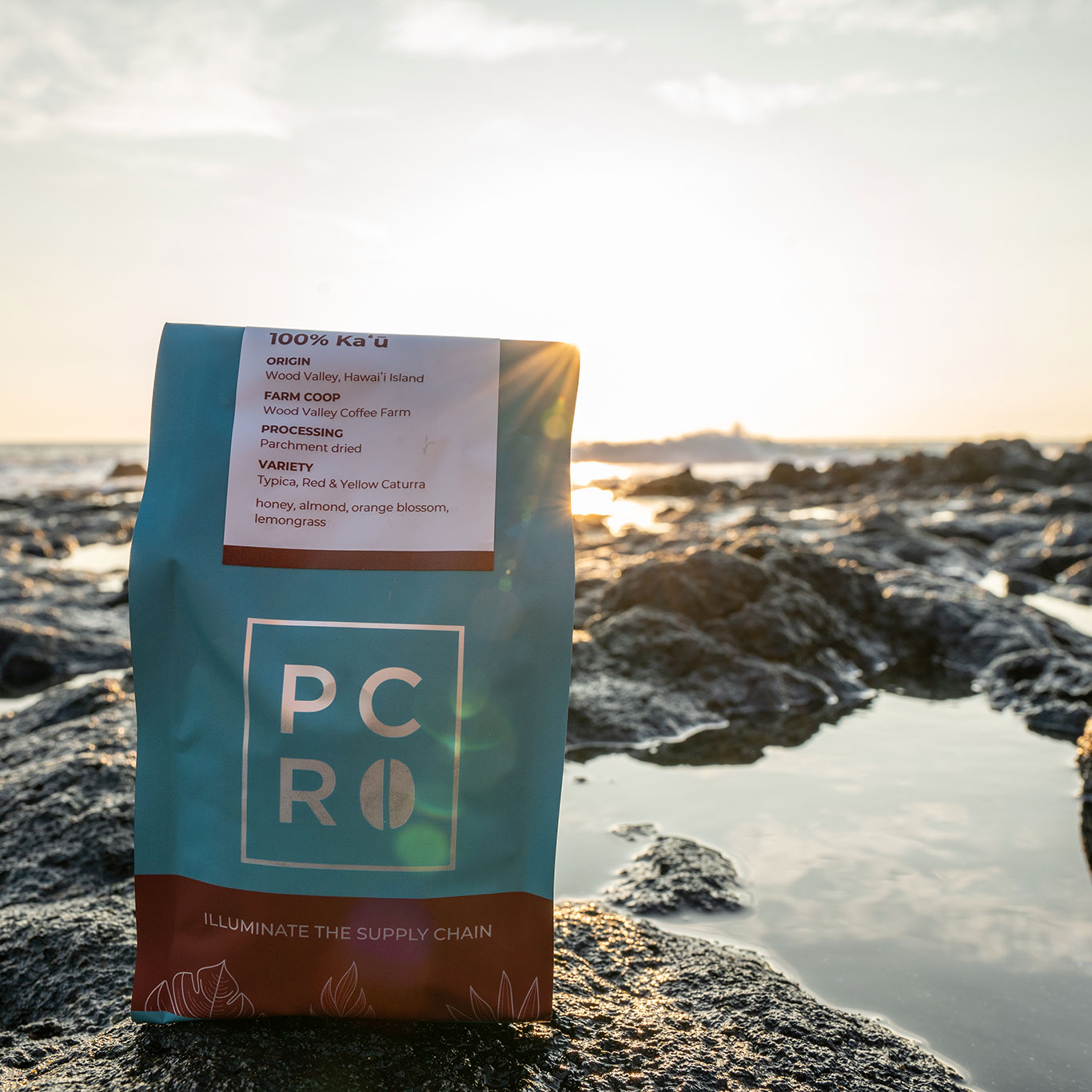
Often imitated, never duplicated, Sprudge’s globe-trotting mind-bending Coffee Design feature series is now in its frankly outrageous ninth year and counting. We want more—more we say!—more thoughtful branding, more interesting design, and more from the very forefront of the field of consumable art.
Coffee packaging is a canvas, honey, and this is the Met. Contact us if you have a coffee design tip—submissions are always free thanks to the support of our partnership with Savor Brands. Explore our Coffee Design archives.








